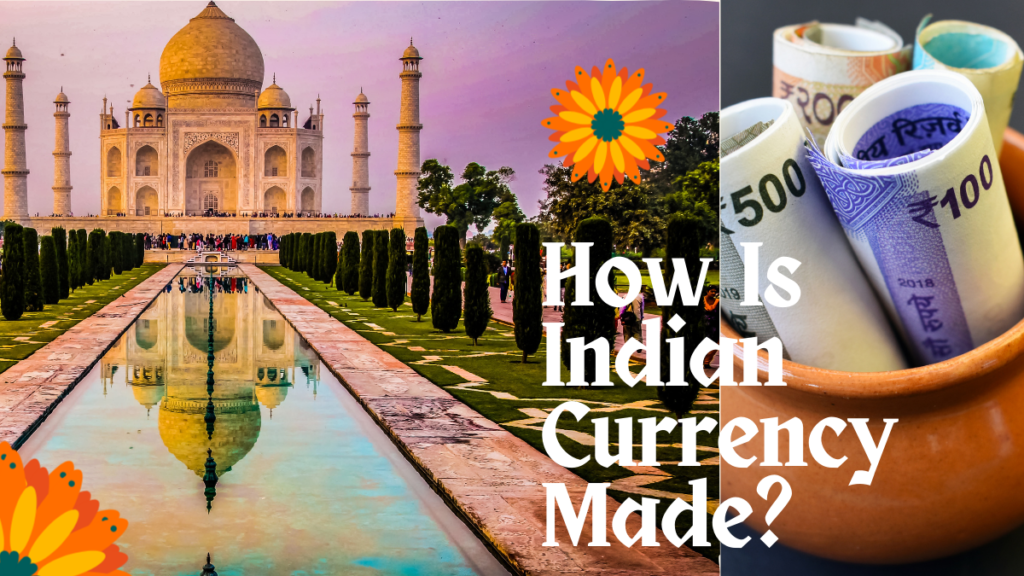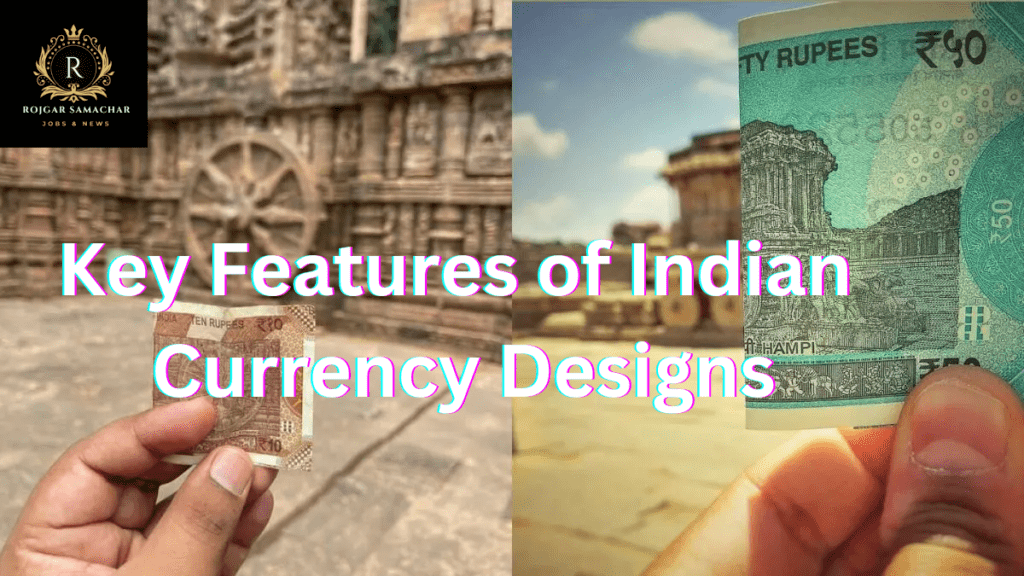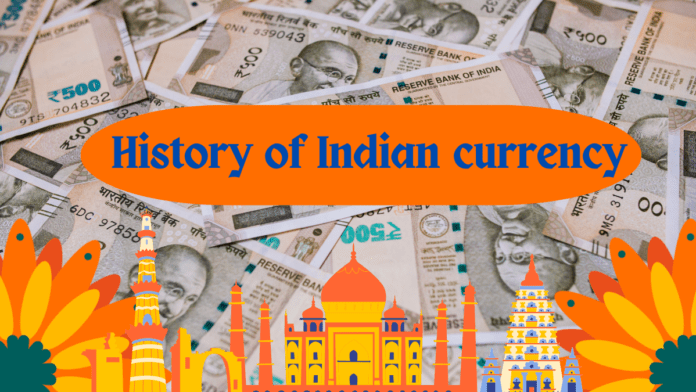History of Indian currency
India is a land of fascinating history, and its currency has a story just as rich and colorful. The money we use today has evolved over thousands of years, reflecting changes in rulers, economies, and technology. This blog will explore the history of Indian currency, its meaning, denominations, and some amazing facts. Let’s dive in!
What is Currency?
Currency is the money used in a country to buy and sell goods or services. It can be in the form of coins, banknotes (paper money), or digital payments. In India, the official currency is called the Indian Rupee (₹), and its symbol looks like this: ₹. History of Indian currency
The History of Indian Currency
The history of Indian currency spans centuries, from ancient times to modern days. Here’s how it evolved:
1. Ancient Times (Before Coins):
- Before coins were invented, people used a system called barter.
- In barter, goods were exchanged for other goods. For example, rice could be traded for salt or clothes.
- However, this system was not always easy because people didn’t always need what the other person was offering the history of Indian currency.
2. Introduction of Coins:
- Around 6th century BCE, India was among the first countries in the world to use coins.
- These coins were made of silver, gold, copper, or lead and had simple designs, like animals or symbols.
- Ancient kingdoms like the Mauryan Empire and Gupta Empire used coins with images of rulers or deities its the history of Indian currency.
3. Medieval Era (Islamic Rulers):
- During the rule of the Delhi Sultanate and later the Mughal Empire, Indian coins saw a big change.
- Coins had inscriptions in Persian and were beautifully decorated.
- Akbar the Great, one of the most famous Mughal emperors, introduced coins with a mix of Islamic and Hindu symbols its the history of Indian currency.
4. British Era:
- When the British East India Company took control of India, they introduced new coins and paper money.
- Coins were made of copper, silver, and gold, and notes had the image of Queen Victoria or King George.
- In 1861, the Reserve Bank of India (RBI) was established, which became the authority to issue Indian currency its the history of Indian currency.
5. After Independence (1947):
- After gaining independence in 1947, India introduced its own currency system.
- The first coins and notes of independent India were issued in 1950.
- In 1957, India adopted the decimal system, dividing the rupee into 100 paise.
6. Modern Era (Digital Revolution):
- Today, Indian currency includes paper notes, coins, and digital payment methods like UPI, mobile wallets, and online banking.
- Coins are made of stainless steel, and paper money is printed with images of Mahatma Gandhi and important landmarks its the history of Indian currency.
Indian Currency Denominations
Indian money comes in different denominations, which means different values. Let’s take a look:
1. Coins:
- Coins are made of metal and come in small denominations.
- Current coins in circulation include:
- ₹1, ₹2, ₹5, and ₹10
- Older coins, like 50 paise, are no longer in use.
2. Banknotes (Paper Money):
- Indian banknotes are colorful and have unique features to prevent counterfeiting.
- The denominations of banknotes are:
- ₹10, ₹20, ₹50, ₹100, ₹200, ₹500, and ₹2000
- Each note has an image of Mahatma Gandhi on one side and an important Indian landmark on the other, like the Red Fort or the Sanchi Stupa. The history of Indian currency.
Facts About the history of Indian currency.
Here are some interesting facts about the history of Indian currency:
- Rupee Symbol (₹):
- The symbol ₹ was adopted in 2010.
- It was designed by D. Udaya Kumar, a professor from Tamil Nadu.
- First Paper Note:
- The first paper note in India was issued by the Bank of Hindostan in the early 19th century.
- Plastic Notes Experiment:
- In 2018, the RBI introduced plastic notes in a few areas to test their durability.
- Blind-Friendly Features:
- Indian banknotes have special marks to help visually impaired people identify denominations.
- Demonetization (2016):
- In 2016, the Indian government demonetized ₹500 and ₹1000 notes to reduce black money.
- Coins for Special Events:
- Special coins are sometimes issued to commemorate events, like the 150th birth anniversary of Mahatma Gandhi.
- “Paise” Name Origin:
- The word “paise” comes from the Sanskrit word “pada”, meaning “quarter.”
Importance of Indian Currency Today
Indian currency is not just about buying and selling. It plays a huge role in the country’s economy and daily life.
- National Identity:
- The designs on coins and notes reflect India’s rich culture and history.
- Economic Growth:
- A strong currency helps in trade, both within the country and internationally.
- Ease of Transactions:
- Coins and notes make it easy to carry out everyday transactions, while digital payments are making things even faster.
- Tourism:
- Foreign tourists often admire Indian currency for its colorful designs and unique symbols.

How Is Indian Currency Made?
Indian coins and notes are made with great care to ensure security and durability.
- Coins:
- Coins are made in four mints located in Mumbai, Kolkata, Hyderabad, and Noida.
- Notes:
- Paper money is printed in four printing presses in India.
- Special paper and ink are used to prevent forgery.
Future of Indian Currency
With technology advancing every day, Indian currency is also changing. Here’s what the future may look like:
- Digital Money:
- More people are using digital payments, reducing the need for physical money.
- Eco-Friendly Currency:
- Efforts are being made to use materials that are better for the environment.
- Smart Coins:
- Coins with embedded chips could be introduced to prevent fraud.
How to Take Care of Indian Currency
- Don’t Write on Notes: Writing on paper money damages its appearance and makes it hard to use.
- Handle Coins Properly: Avoid scratching or bending coins.
- Use Digital Payments: Reduce wear and tear on physical money by using digital options whenever possible.
Conclusion
The history of Indian currency is a story of innovation, culture, and progress. From the barter system to digital payments, it has come a long way. Indian currency is not just about money; it reflects the country’s identity, culture, and pride. Whether it’s coins from ancient times or modern ₹2000 notes, every piece tells a story of India’s journey.
Next time you hold a coin or a note, remember the rich history and hard work that went into making it. Let’s value and respect our currency as it represents the strength and unity of our nation.
Pictures Printed on Indian Currency After Independence and Their Significance
Indian currency is not just a medium of exchange but also a canvas showcasing the country’s history, culture, and achievements. Since independence in 1947, Indian currency notes have featured various pictures, each carefully chosen to reflect the nation’s identity, values, and aspirations. Here’s a look at the designs on Indian currency after independence and their significance. Its plays a very important role in the history of Indian currency.


Key Features of Indian Currency Designs in the history of Indian currency.
- Indian currency notes prominently feature the image of Mahatma Gandhi, symbolizing peace, freedom, and his pivotal role in India’s independence.
- On the reverse side of the notes, there are images of monuments, achievements, and cultural symbols representing India’s heritage, diversity, and progress.
Pictures on Indian Currency Notes Post-Independence
1. Initial Designs (1950-1996)
- After independence, the first series of Indian currency notes prominently featured the Ashoka Pillar emblem.
- The Ashoka Pillar, a symbol of truth, justice, and dharma, reflects India’s ancient heritage and the values of governance.
- Early notes also included designs inspired by agricultural and industrial themes, showcasing India’s focus on growth.
2. The Mahatma Gandhi Series (1996–2016)
- Introduced in 1996, the Mahatma Gandhi Series became iconic.
- These notes featured a portrait of Mahatma Gandhi on the front and images representing India’s culture, achievements, and landmarks on the back.
- Pictures and Their Significance on These Notes:
- ₹10 Note: The Konark Sun Temple, Odisha – Represents India’s architectural excellence.
- ₹20 Note: Palm trees and coastal landscapes – Highlights India’s tropical beauty.
- ₹50 Note: Hampi’s stone chariot, Karnataka – Symbolizes India’s rich heritage.
- ₹100 Note: The Himalayas – Represents strength and natural beauty.
- ₹500 Note (Old): Depicted farmers and agricultural themes, emphasizing the backbone of India’s economy.
- ₹1000 Note (Old): Featured an oil refinery, symbolizing industrial progress.
3. The Mahatma Gandhi (New) Series (2016–Present)
- Post-demonetization in 2016, a new series of notes was introduced.
- These notes are colorful and continue to feature Mahatma Gandhi but with updated designs and themes on the reverse side.
Pictures and Their Significance on the New Notes:
- ₹10 Note (Orange):
- Sun Temple at Konark, Odisha – A UNESCO World Heritage Site showcasing India’s ancient architecture.
- ₹20 Note (Yellow):
- Ellora Caves, Maharashtra – Represents India’s spiritual and artistic heritage.
- ₹50 Note (Fluorescent Blue):
- Rani ki Vav, Gujarat – A stepwell highlighting the ingenuity of ancient Indian water management systems.
- ₹100 Note (Lavender):
- Rani ki Vav, Gujarat – Reaffirming its cultural importance.
- ₹200 Note (Bright Yellow):
- Sanchi Stupa, Madhya Pradesh – Reflects India’s Buddhist heritage and peaceful teachings.
- ₹500 Note (Green):
- Red Fort, Delhi – Symbolizes India’s independence and sovereignty.
- ₹2000 Note (Magenta):
- Depicts India’s Mars Mission (Mangalyaan) – A tribute to India’s technological achievements in space exploration.
Reasons Behind These Pictures and importance in the history of Indian currency.
- Heritage and Culture:
- The images of ancient monuments like the Konark Sun Temple, Sanchi Stupa, and Rani ki Vav highlight India’s historical richness and cultural diversity.
- Natural Beauty:
- Pictures like the Himalayas on old ₹100 notes remind us of India’s breathtaking landscapes and natural wealth.
- National Pride:
- Symbols like the Red Fort and the Ashoka Pillar on coins and notes reflect India’s independence and governance.
- Economic and Technological Progress:
- Themes like the Mars Orbiter Mission on ₹2000 notes and oil refineries on older ₹1000 notes demonstrate India’s growth in science and industry.
- Unity in Diversity:
- Showcasing monuments and themes from different parts of the country reinforces the idea of a unified nation with diverse traditions.
- Tourism Promotion:
- Highlighting UNESCO World Heritage Sites like Ellora Caves and Hampi attracts global attention to India’s rich architectural history.
Interesting Facts About the Pictures on Indian Notes and its importance in the history of Indian currency.
- Why Mahatma Gandhi?
- Mahatma Gandhi’s face on Indian currency symbolizes peace, non-violence, and his significant role in shaping modern India.
- His portrait was introduced to replace earlier symbols like the Ashoka Pillar to create a unified and recognizable design.
- Dynamic Changes:
- The designs of Indian currency have evolved to reflect changing priorities, from ancient traditions to modern technological achievements.
- Watermarks:
- Alongside printed pictures, Indian notes also feature watermarks of Gandhi’s image as a security feature.
- Global Attention:
- The colorful and thematic designs of Indian notes have been praised internationally for their creativity and cultural representation.
Conclusion
The history of Indian currency is not just money; it is a storyteller. Through the images printed on coins and notes, it narrates tales of India’s past, celebrates its culture, and showcases its achievements. From ancient monuments like the Sun Temple to modern achievements like the Mars Orbiter Mission, every picture on Indian currency reflects a part of what makes the country special.
Next time you hold a note or coin, take a moment to observe its design. Each symbol, monument, or theme carries a legacy that connects us to our heritage and inspires us toward progress. Indian currency is truly a blend of history, art, and pride.



Excellent info